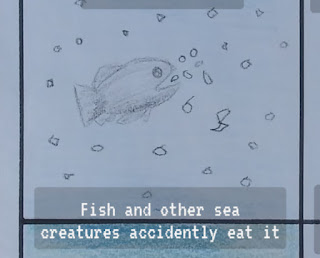I currently have a class called SDGs and you. In this class we learn about the 17 SDGs. Our assignment was to talk about and find a way to help fix one of these SDGs. Since this is a group project I have worked with A.L. and L.H. Our group has decided to do SDG #14 Life below water. This SDG is related to climate change which we have thoroughly researched.
Now that it’s becoming the holiday season, I’m sure you are planning your holiday family vacation. You should visit a very special place. One of the five garbage islands! They are completely manmade and combined have a total of an estimated 5.25 trillion pieces of plastic! In all seriousness, the fact that there is enough plastic to be considered an island, let alone 5, is insane. These are caused because of large whirlpools called geyers. They move very slowly and accumulate garbage in concentrated places. Obviously, this is very harmful, because all of this garbage makes these areas uninhabitable, and kills anything that is there and can’t get out. We can’t only focus on the big things, because that will never clean the ocean. We must also focus on the little things as well, or the problems will never get solved.
Many products, as well as when big pieces of plastic break down, produce microplastics. These are equal to less than five millimeters. When these go in the water, they are often accidentally eaten by shellfish and fish.
When they the sea creatures suck in water to attract prey and algae, that water often contains microplastics. Them eating this often causes cellular inflammatory responses, reproductive problems, and makes any offspring have a variety of health problems, including being smaller, less powerful, and dying early. When they eat the microplastics, and then we eat seafood, we eat the micro-plastic as well, which I don't think you want to do.
Even if you don’t care about the fish, or shellfish, or you don’t like seafood, you should at least care about some of the most popular animals, like turtles and dolphins. Many of these animals eat, choke, or suffocate and die, which is part of the reason a lot of them are endangered.
There are many simple ways that you yourself can fix this, and if everyone does it we can fix this. One way is Recycling; I know you’ve had this shoved in your face a million times, but only about 10% of plastic gets recycled, and if we bring that to a significantly higher number, many of the world’s problems will be at least partially solved. If we recycle all of our plastic, then the garbage islands don’t get bigger, the microplastics don’t get everywhere, and marine life can go back to normal. Recycle bottles. Recycle grocery bags. Recycle cardboard. Recycle cans, ect. If we ALL recycle we can save the world!
PLASTIC GARBAGE ISLANDS. Retrieved November 19, 2020, from http://stories.visualeyed.com/garbage-island/
( January 07). Microplastic. Retrieved November 19, 2020, from http://www.water-pollution.org.uk/microplastic/.










Comments
Post a Comment